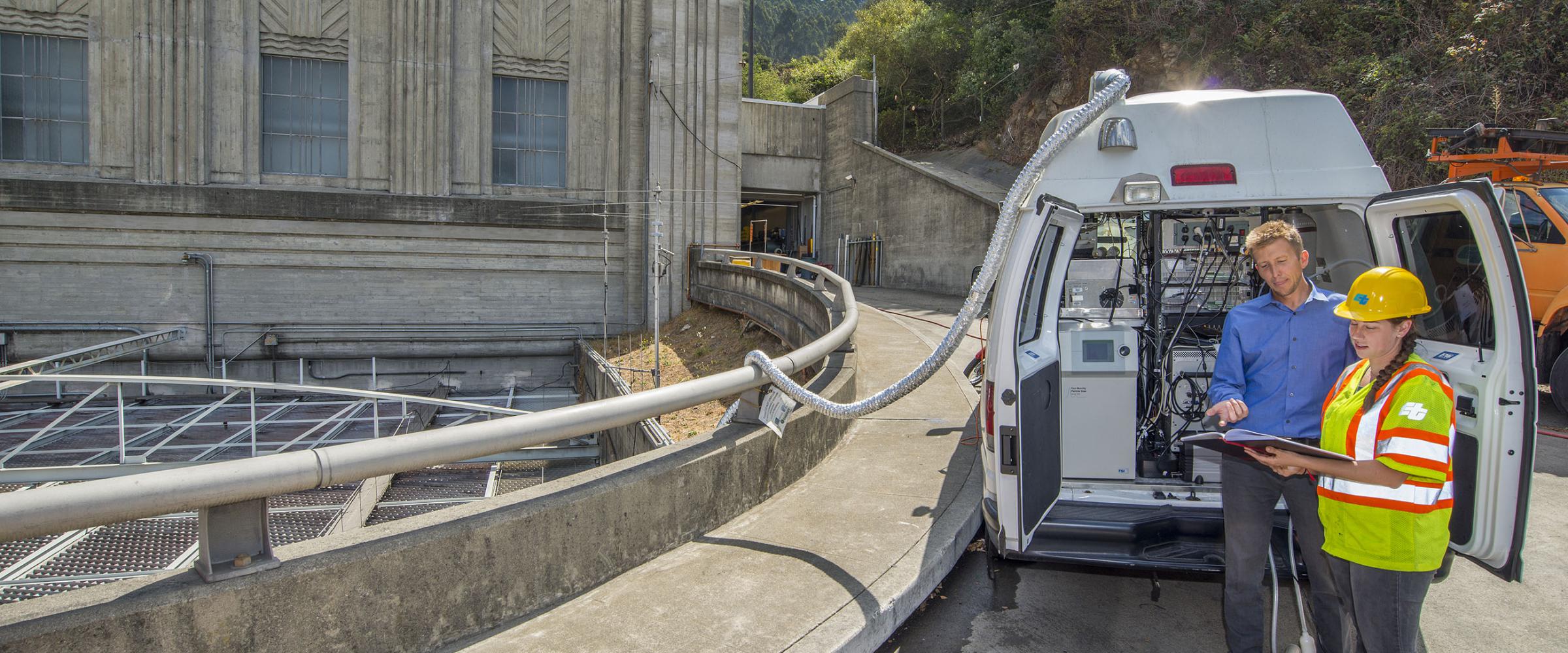Emissions & Controls
Vehicle Air Pollution Emission Control Technologies
We characterize pollutant emissions from in-use vehicles to quantify how new and evolving emission control technologies alter pollutant emissions over time, providing an independent assessment of state and federal emission control programs that aim to clear the air.
Emissions & Controls
Quantifying In-Use Emissions and the Impact of Controls

Diesel trucks play an essential role in the movement of goods to consumers across our nation. However, diesel engines are major emitters of air pollutants, including nitrogen oxides and soot.
To reduce these emissions and their associated adverse impacts on human health and the environment, the Environmental Protection Agency (EPA) establishes increasingly stringent federal emissions standards. To comply with the most recent standards, manufacturers equip new heavy-duty diesel trucks sold in the United States with diesel particle filters and selective catalytic reduction systems.
Lawrence Berkeley National Laboratory (Berkeley Lab) and University of California, Berkeley (UC Berkeley) scientists work together to lead research in measuring the in-use emissions of heavy-duty diesel trucks and the performance and durability of these after-treatment emission control technologies.
Berkeley Lab also researches the effectiveness of vehicle inspection and maintenance programs in reducing emissions from other vehicle types.
The California Air Resources Board and the Bay Area Air Quality Management District support this work.
Research Projects
Collaborations and Partnerships
Selected Publications
Preble, CV; Harley, RA; Kirchstetter, TW (2019) Control Technology-Driven Changes to In-Use Heavy-Duty Diesel Truck Emissions of Nitrogenous Species and Related Environmental Impacts, Environ. Sci. Technol., doi:10.1021/acs.est.9b04763 (pubs.acs.org/doi/10.1021/acs.est.9b04763)
Preble, CV; Cados, TE; Harley, RA; Kirchstetter, TW (2018) In-use performance and durability of particle filters on heavy-duty diesel trucks, Environ. Sci. Technol., doi: 10.1021/acs.est.8b02977 (pubs.acs.org/doi/abs/10.1021/acs.est.8b02977?af=R)
Preble, CV, Dallmann, TR; Kreisberg, NM; Hering, SV; Harley, RA; Kirchstetter, TW (2015) Effects of particle filters and selective catalytic reduction on heavy-duty diesel drayage truck emissions at the Port of Oakland, Environ. Sci. Technol., doi:10.1021/acs.est.5b01117 (Effects of particle filters PDF)

